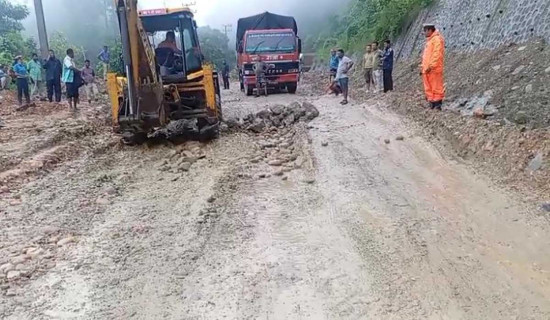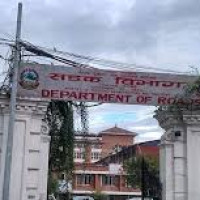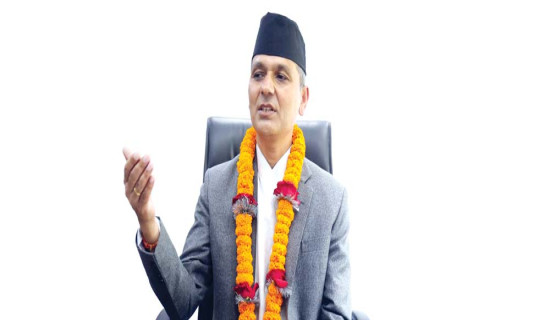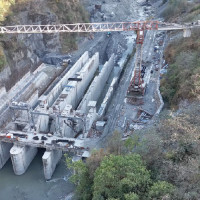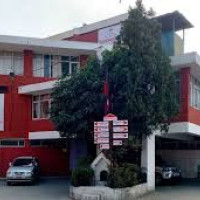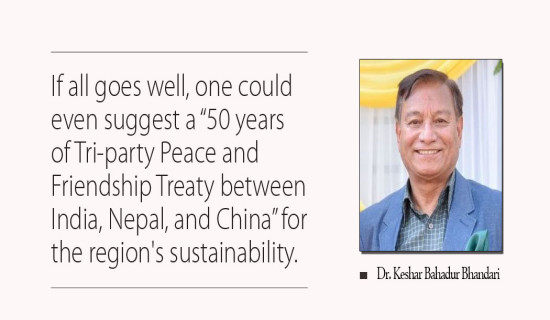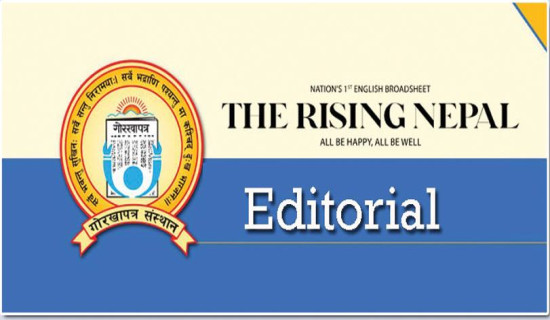- Saturday, 4 October 2025
Flying cars, a milestone in Nepal’s auto sector
By A Staff Report,Kathmandu, Aug. 21: The 17th edition of the NADA Auto Show, Nepal’s largest automobile exhibition is underway at Bhrikutimandap, Kathmandu, and it’s unlike any other year so far. With a notable shift in focus from vehicles to future-forward technologies, this year’s fair has proven that the Nepali auto industry is undergoing a major transformation.
While in past years the fair was a showroom of every major auto brand, 2025 tells a different story. Following the split between NADA and the newly-formed NAIMA, many well-known automobile importers chose to sit this one out. But instead of empty stalls, what filled the space was a bold emphasis on innovation, sustainability, and future mobility.
Leading that narrative was the debut display of Nepal’s first flying car, or more accurately, an autonomous electric air taxi, brought in by MAW Vriddhi Autocorp. The model EH216-S, developed by China’s Changan Automobile in partnership with E-Han, has turned heads and dominated conversations throughout the exhibition.
“We realised that this year we would do something that has never been done in previous years, something that symbolised the future, a flying car” said Laxmi Ghimire, HR department head of MAW Group of Companies. “The EH216-S represents a bold leap forward, and the response from the public has been phenomenal; on the inaugural day, there wasn’t a space to put your feet on the ground, the crowd was that interested,” she added.
The flying machine , a type of Electric Vertical Take-Off and Landing (E-VTOL) vehicle, can carry two passengers, fly at an altitude of up to 3,000 metres, and reach speeds of 130 km/h. Fully autonomous, it operates without a pilot and uses 16 motors and 16 propellers for propulsion and balance. With a battery capacity of 20–25 kWh, the vehicle offers a flight duration of 21 minutes, covering approximately 35 km on a single charge.
But beyond the engineering, it’s the symbolism that has captured the public imagination.
“This is more than just a vehicle, it’s a vision of where mobility is heading,” said Saurav Nepal, a senior automotive journalist. “It may not be ready for the Nepali market just yet, especially with its purpose of modality, but it gets people dreaming, and that’s powerful. Countries including China and UAE have started experimenting with the vehicle and plan to use it as a mode of taxi before privatisation, but for Nepal it seems futuristic and many trials and turns need to be done before its implementation” he added.
See Page 6
The structure of the EH216-S is sleek and futuristic, with glass doors and a panoramic roof that open like wings, a deliberate nod to the dream of flying like birds. Inside, an onboard screen provides real-time flight data, while 360-degree cameras and sensors ensure safety and collision avoidance.
Another automotive journalist, who chose to remain anonymous, shared a more critical view. “Let’s be honest, NADA this year wasn’t about selling cars. Since the break-up with NAIMA and the emergence of a rival auto show, several top vehicle brands were missing. So, NADA had to pivot. This year’s show became a tech expo more than anything else. The flying taxi, the humanoid robots, these were statements,” he said.
Despite reduced brand participation, NADA 2025 has drawn tens of thousands of visitors. Over 75 stalls are exhibiting a mix of electric vehicles, accessories, and financing options from banks and insurance companies. Prime Minister KP Sharma Oli, who inaugurated the show, acknowledged the strategic role such platforms play in shaping transport policy and public awareness.
For MAW Group and Changan’s Deepal brand, the flying taxi is also a commercial experiment. While mass adoption may be years away, the model has already been used in parts of China for sightseeing and emergency services.
Whether or not this technology finds its footing in Nepal, one thing is certain, this year’s NADA has sparked public curiosity and reignited discussions about what the future of transport in Nepal might look like.
“Innovation is no longer a choice. It’s a necessity. And if flying taxis are the future, then NADA just gave us a glimpse,” she said.



